Which houseplants are toxic to dogs? Vet experts pinpoint problem plants and solutions
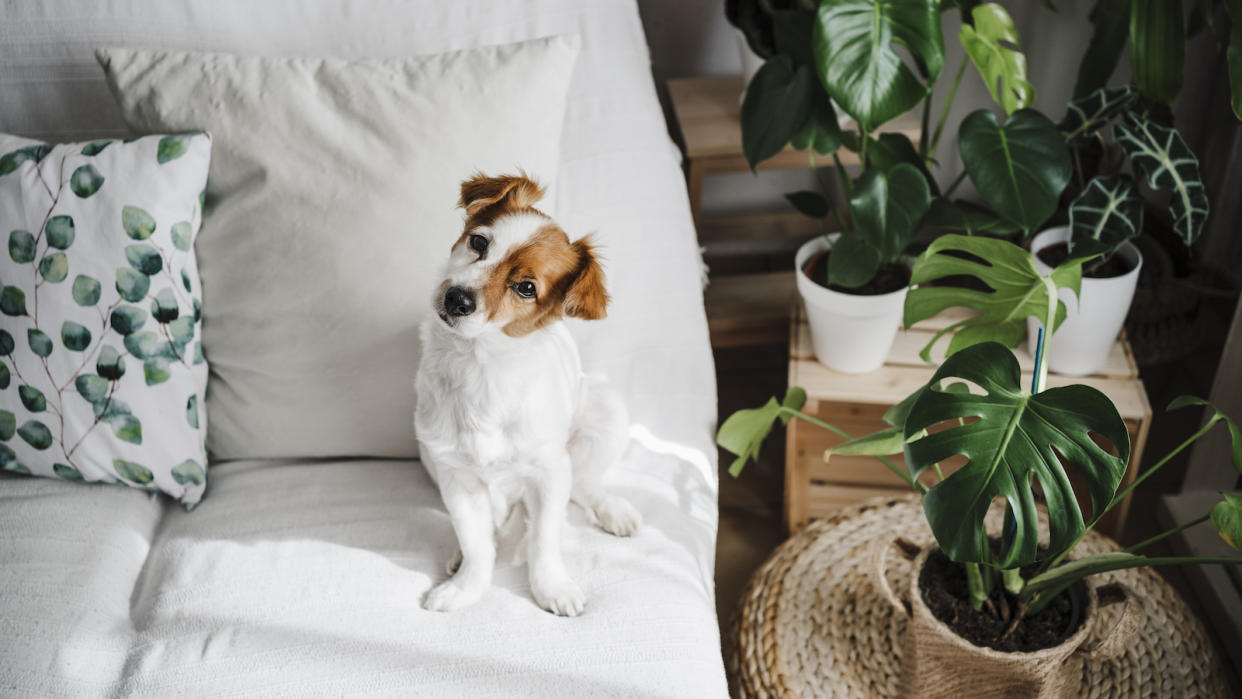
Which houseplants are toxic to dogs? Being a plant parent and a pet parent don't always go hand in paw, so we elicited help from veterinary professionals about problematic leafy greens.
As much as it is enjoyable to watch flora grow and thrive, you have to be careful about what you bring into the house and what to plant in your garden, as there are quite a few types that are harmful to our four-legged friends.
While perusing the nursery for the best indoor plants, we'll help you steer clear of the red flags and learn why they don't mix well with pups.
Which houseplants are toxic to dogs?
While there are delightful pet-friendly houseplants, including Boston Ferns and Calathea, to name a select few, more often than not, plants can be toxic, particularly when dogs go for a nibble.
"The symptoms of plant toxicity in dogs can vary depending on the type of plant ingested, but some common symptoms include vomiting, diarrhea, abdominal pain, difficulty breathing, seizures, and even death," says Rachel Hinder, director of claims and registered veterinary technician at Embrace Pet Insurance. "The onset of symptoms can vary from a few minutes to several hours after ingestion."
Even if you suspect the amount of leaves ingested is minimal, all veterinary professionals are in agreement about treating the matter as quickly and seriously as possible.
"If you suspect your pet is intoxicated please do not waste time, every minute can make a big difference in the absorption and damage caused to your dog," says Dr. Paola Cuevas Moreno, Senior veterinarian and pet behaviorist at Hepper.com. "Do not wait it out, call the vet and get moving. It's best to be safe than sorry."
There are a few numbers to keep stored in your cell: your vet's, Pet Poison Helpline (800-213-6680), and the ASPCA Animal Poison Control Center (APCC) at 1-888-426-4435. Even if Fido only took a bite or two from the leafy companions in your cute planters, don't delay when taking action.
"Call your veterinarian or animal poison control immediately if your pet ingests a potentially toxic houseplant," says Dr. Katy Nelson, senior veterinarian at Chewy. "They may recommend you bring your pet to the hospital for treatment right away."
Depending on how serious the situation is, vets could induce vomiting or perform gastric lavage to stop further ingestion, administer activated charcoal to absorb toxins, and/or administer IV fluids and medications to ease symptoms. In very serious cases, pups could be hospitalized for further treatment.
Before buying a new plant, check the ASPCA’s extensive poisonous plant database and the Pet Poison Helpline’s toxicity list.
Quicklist
Our expert vets compiled a list of commonly problematic houseplants and flowers that are toxic to dogs, which should make you mindful of what to plant in May and bring home from the local florist. Consult the ASPCA for a comprehensive list of toxic and non-toxic plants and flowers to dogs.
Sago Palm (Cycas revolut)
Azaleas and Rhododendron in the Ericaceae family
Desert rose (Adenium obesum)
Kalanchoe (Kalanchoe spp)
Tulips (Tulipa spp)
Hyacinths (Hyacinthus orientalis)
Amaryllis (Amaryllis spp)
Poison ivy (Toxicodendron radicans)
Snake Plant (Sansevieria trifasciata)
Calla lily (Zantedeschia spp)
Sago Palms
Milkweed
Tomato plants
Garlic plants
Onion plants
Lily of the valley
Oleander
Autumn Crocus
Cyclamen
"Keeping our pets 100% safe some these plants is likely not possible but being vigilant while our pets are outside and being mindful of how and what goes into out landscaping are the biggest things we can do to avoid potential ingestion of plants that could harm them," warns Dr. Jessica Shepler, lead veterinarian and managing partner at CityVet - Highlands Ranch.
1. Sago Palm
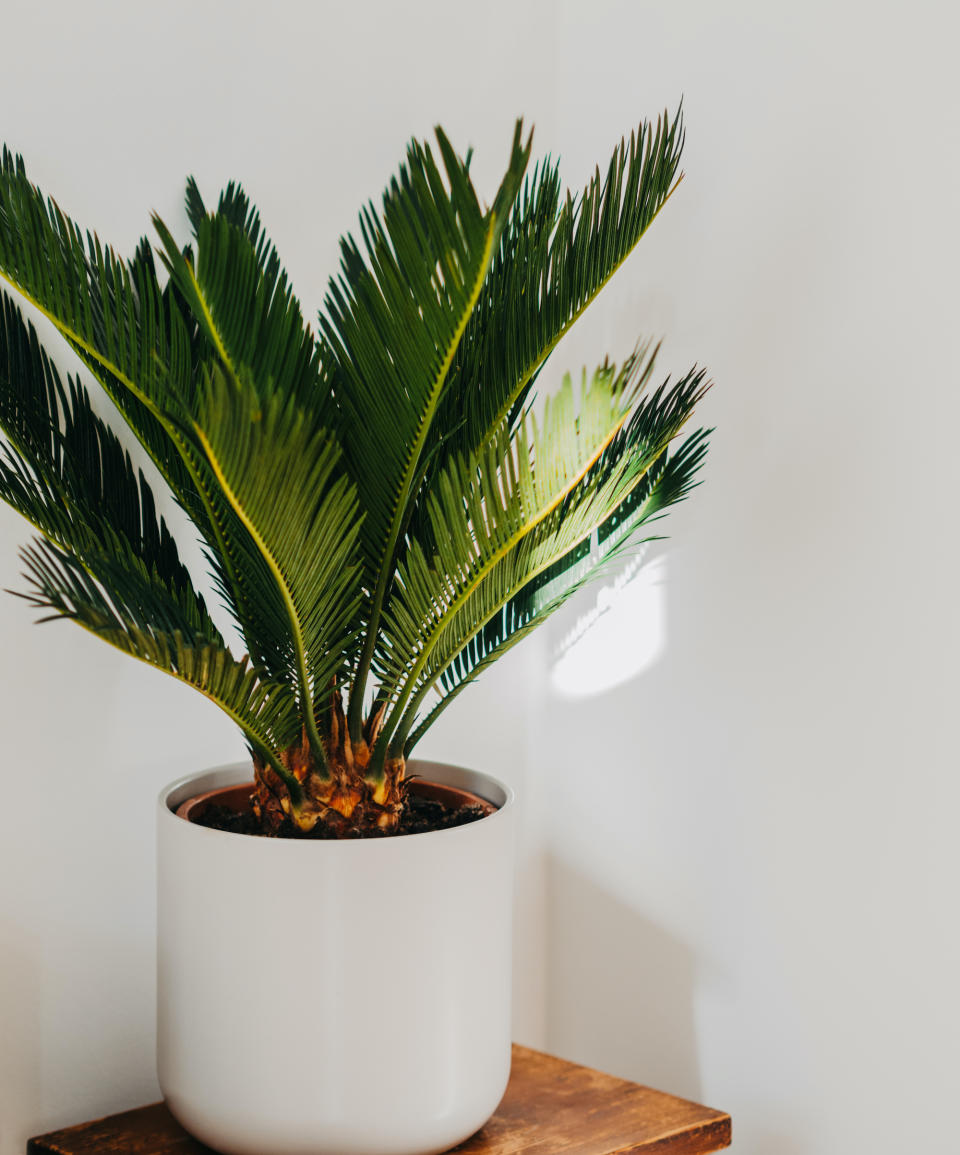
While a sago palm looks like a gorgeous tropical indoor plant, it's best to avoid snagging one if you have a pup in tow, or even kids, as all parts of the plant are toxic. The cycasin and macrozamin toxins are dangerous, and humans should wear gloves while handling the plant. Should a pup ingest a sago palm, the greenery can cause vomiting, diarrhea, seizures, liver failure, and potentially death, according to Dr. Katy Nelson.
This is one of the more dangerous selections out there, but even if you have less problematic plants on high shelves or off-limit rooms to pets, it's important to keep a dog's mind occupied.
"Provide plenty of safe distractions to keep pets busy," Dr. Nelson says. "Lots of mentally stimulating, interactive toys such as puzzles and treat dispensing toys for dogs and tech toys, puzzles and multidimensional games for cats, plus plenty of exercise can keep pets from even thinking about messing with the greenery."
2. Pothos
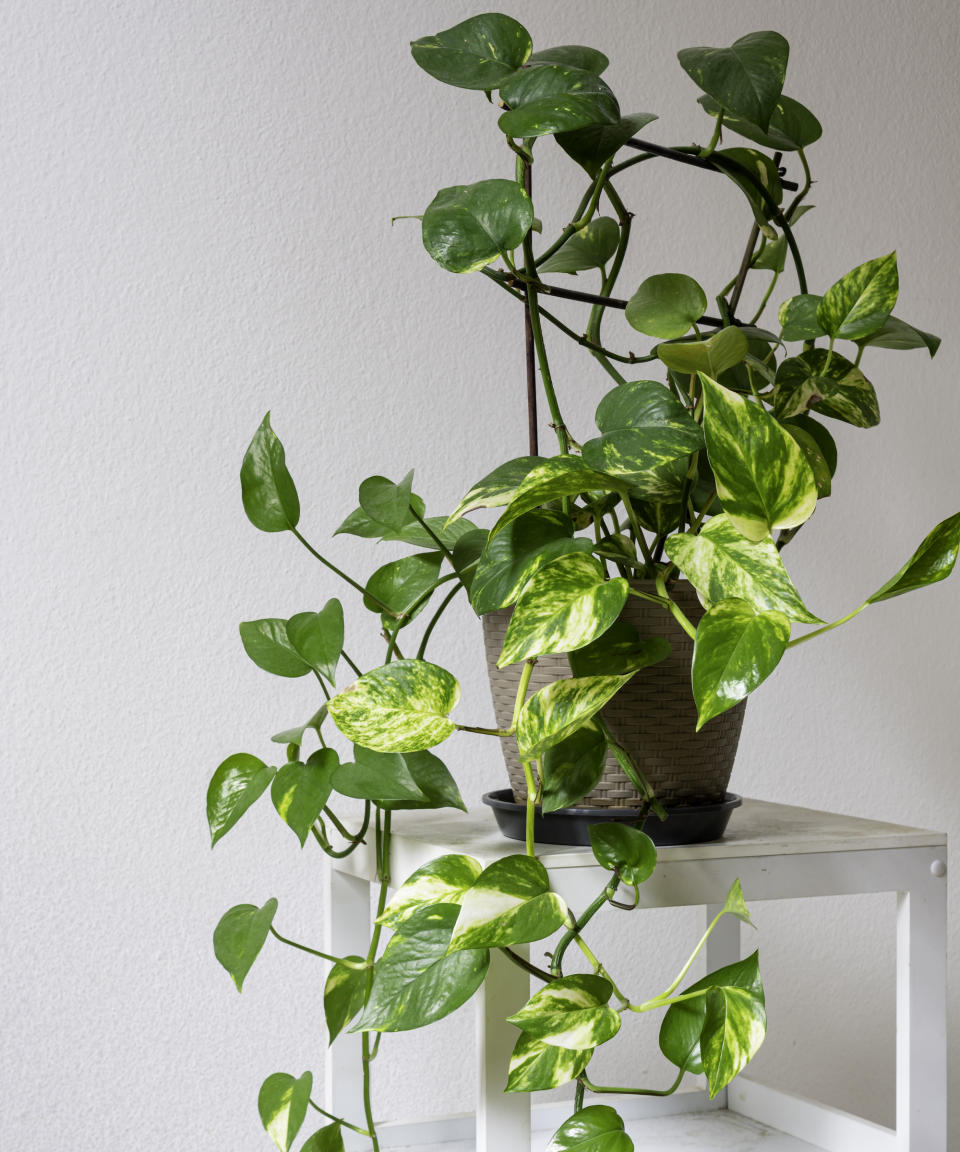
While pothos is beloved for being a low-maintenance, easy houseplant with gorgeous leaves, those with a green thumb might want to think twice about bringing it into a home with dogs. Chewing or ingesting the leaves and stems can cause diarrhea, vomiting, and liver failure in more extreme instances, according to Dr. Nelson.
"Most toxic plants will cause gastrointestinal side effects such as vomiting, diarrhea and excessive drooling but some can have more severe side effects such as cardiac abnormalities, dilated pupils and even kidney and liver failure," Dr. Jessica Shepler warns.
You don't want to learn these lessons the hard way — call a professional ASAP if you believe your dog has decided to pick on a pothos.
3. Philodendron
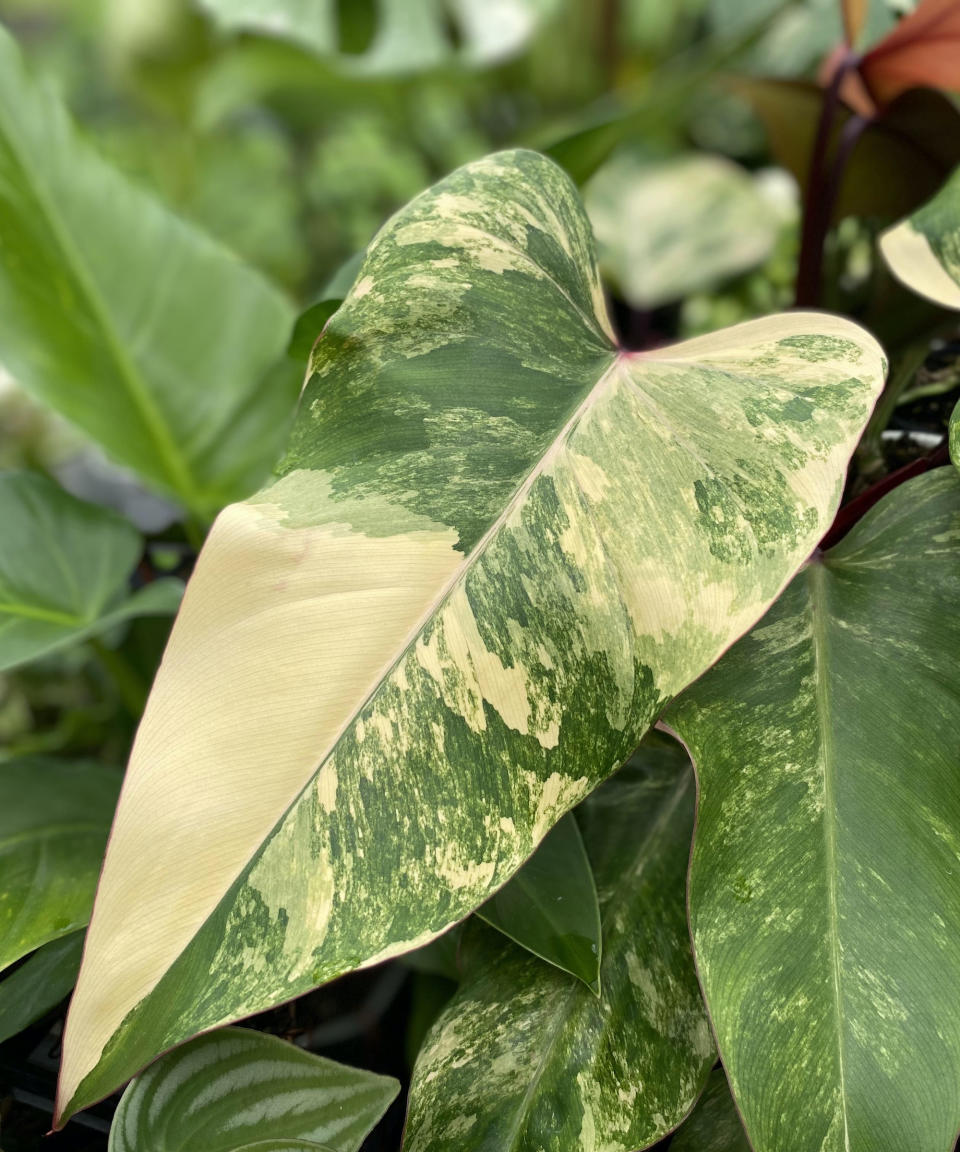
Yes, the philodendron is the plant of the year according to 1-800-Flowers, and the 2024 fan favorite is beloved for what company reps call "bold, variegated leaves." Those leaves, however, might lead to pawing the mouth, drooling, retching if dogs ingest it. The calcium oxalate crystals in philodendron, and closely related species, are what causes issues. If you find that your curious pup has decided to take a bite, rinse their mouth out with water to avoid more absorption — something you should do with any toxic plant — and call a vet ASAP.
4.Snake Plant
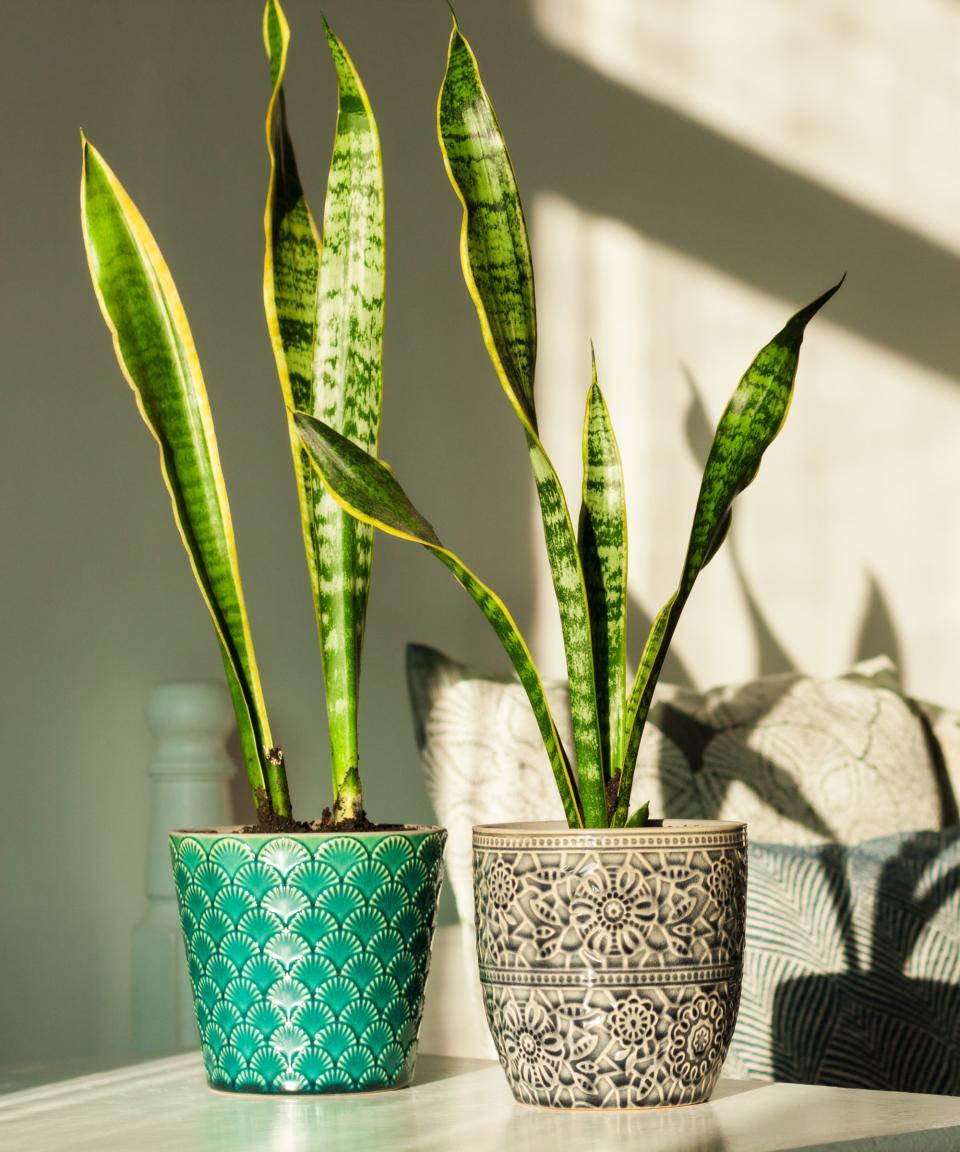
Are snake plants toxic to pets? While you might be tempted to snag this beautiful, no-fuss selection into your abode, it can be mildly to quite toxic to dogs, depending on what they've ingested.
"Get in contact with the vet, and send them a photo of the ingested plant and if possible the calculated amount," says Dr. Paola Cuevas Moreno. "Your vet will give you further instructions."
The Sansevieria and Dracaena varieties are particularly worrisome around four-legged friends.
5. Calla lily
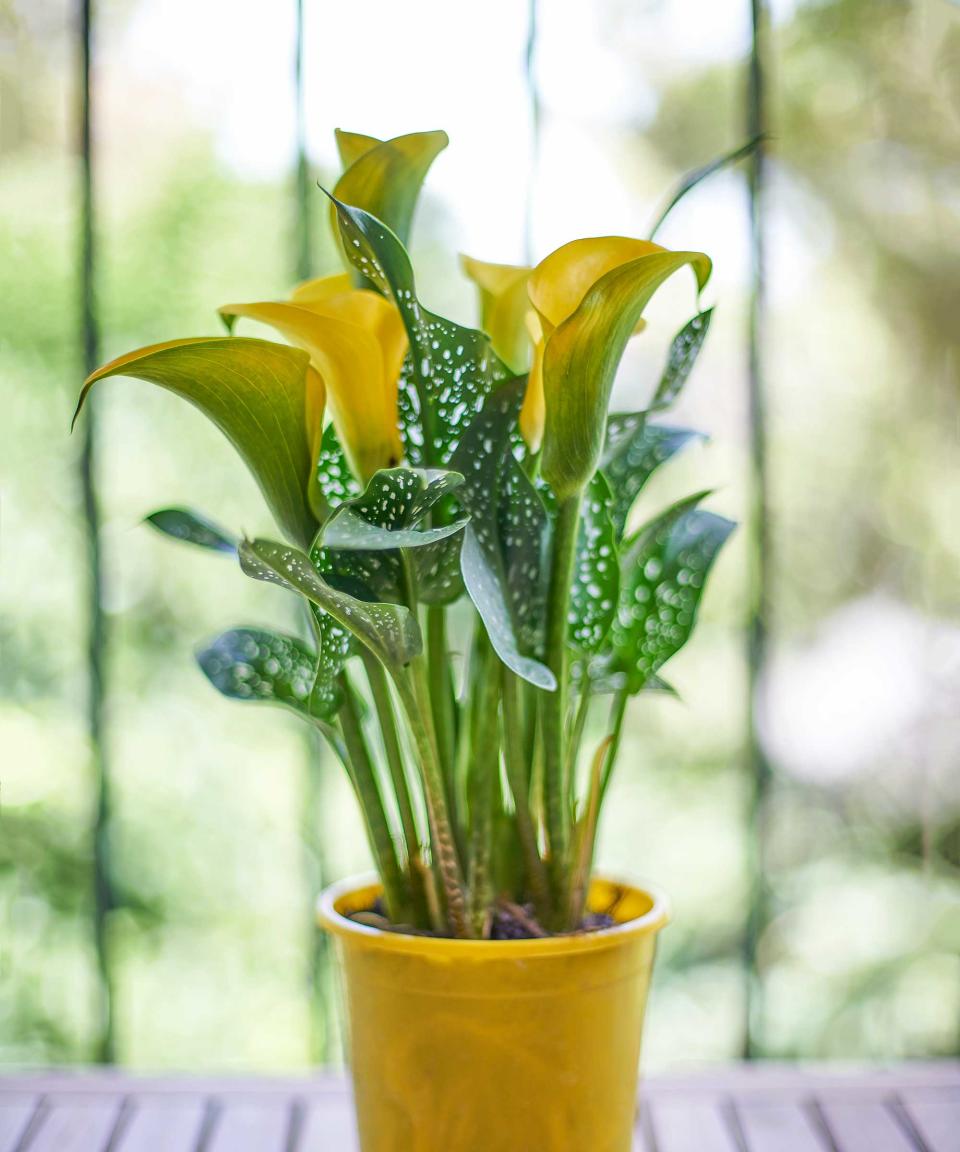
Learning how to care for calla lilies might be a little extensive, but worth it for their beautiful blooms — unless you have a dog. Chewing and swallowing a calla lily is quite problematic for a pup due to the calcium oxalate crystals in the leaves, stems, and flowers.
Meet our experts
FAQs
How do I keep my dog from getting toxic plants?
Always make sure to check plants and flowers with a professional before bringing them into your home — toxic selections are dangerous inside and out.
"To keep dogs safe if you have these plants, it is best to keep them out of reach," says Dr. Rachel Hinder. "This may involve placing them on high shelves or in rooms that are off-limits to pets. It is also important to supervise pets when they are outside and to regularly check the yard for any potentially toxic plants."
Opt for non-toxic plants to be on the safe side.
Are spider plants safe for pets?
Caring for a spider plant? It's one of the most popular plant selections out there, and fortunately, the ASPCA lists it as a non-toxic selection that can be around animals. However, it is mildly hallucinogenic and can be problematic not only for dogs, but cats as well, so keep it in a safe room on a high shelf if you have a companion that is likely to test a few things out.
Are dogs attracted to toxic plants?
While it depends what might lure in a dog to a particular plant — the scent, the shape, the accessibility — it's important to keep any of the toxic plants above out of reach of pets, both indoors and outdoors. Since there is always a way for them to somehow interact with toxic plants if they're in the house, even if they're in a closed off room from pets, it's best to opt for a safe, pet-friendly option instead, and as Dr. Kathy Nelson recommended, keep dogs occupied with toys. When in doubt, fake houseplants will do nicely, and we've rounded up convincing ones that will make you do a double take.
If you have a feline companion, learn about the succulents that are safe for cats and the garden plants that are safe for cats. What will sound the alarms? These are the plants that are poisonous to cats.

